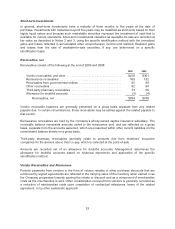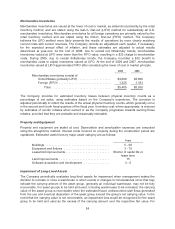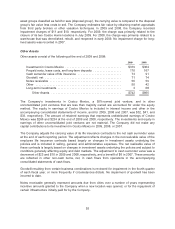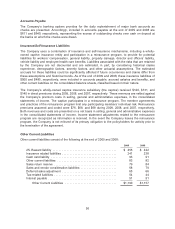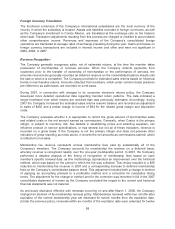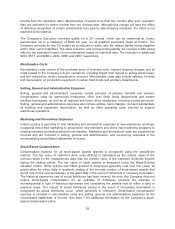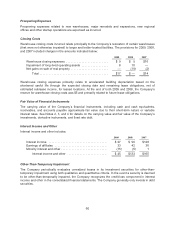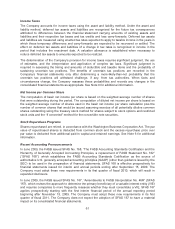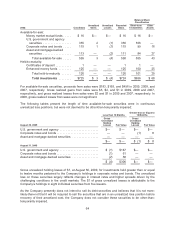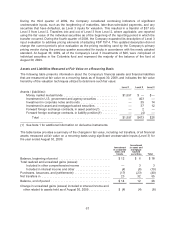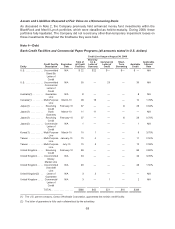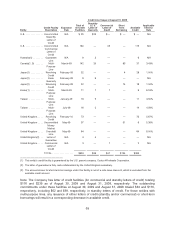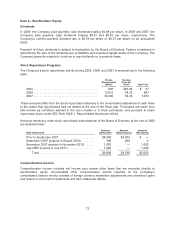Costco 2009 Annual Report Download - page 65
Download and view the complete annual report
Please find page 65 of the 2009 Costco annual report below. You can navigate through the pages in the report by either clicking on the pages listed below, or by using the keyword search tool below to find specific information within the annual report.
Note 2—Investments
The major categories of the Company’s investments are as follows:
Money market mutual funds:
The Company invests in money funds that seek to maintain a net asset value of a $1.00, while limiting
overall exposure to credit, market, and liquidity risks.
U.S. government and agency securities:
These U.S. government secured debt instruments are publicly traded and valued. Losses in this
category are primarily due to market liquidity and interest rate reductions.
Corporate notes and bonds:
The Company evaluates its corporate debt securities based on a variety of factors including, but not
limited to, the credit rating of the issuer. The vast majority of the Company’s corporate debt securities
are rated investment grade by the major rating agencies.
Asset and mortgage-backed securities:
The vast majority of the Company’s asset and mortgage-backed securities have investment grade
credit ratings from the major rating agencies. These investments are collateralized by residential
sub-prime credit, credit card receivables, commercial real estate, foreign mortgage receivables, and
lease receivables. Estimates of fair value are based upon a variety of factors including, but not limited
to, credit rating of the issuer, internal credit risk, interest rate variation, prepayment assumptions, and
the potential for default.
Certificates of deposit:
Certificate of deposits are short-term interest-bearing debt instruments issued by various financial
institutions with which the Company has an established banking relationship. Those certificates of
deposit issued by U.S. financial institutions are insured by the Federal Deposit Insurance Corporation.
The Company’s investments at August 30, 2009 and August 31, 2008, were as follows:
Balance Sheet
Classification
2009: Cost Basis
Unrealized
Gains
Unrealized
Losses
Recorded
Basis
Short-term
Investments
Other
Assets
Available-for-sale:
Money market mutual funds ..... $ 13 $— $— $ 13 $ 13 $—
U.S. government and agency
securities ................... 400 3 — 403 403 —
Corporate notes and bonds ...... 49 1 (1) 49 49 —
Asset and mortgage-backed
securities ................... 48 1 — 49 46 3
Total available-for-sale ...... 510 5 (1) 514 511 3
Held-to-maturity:
Certificates of deposit ........... 59 — — 59 59 —
Total investments ......... $569 $ 5 $(1) $573 $570 $ 3
63


